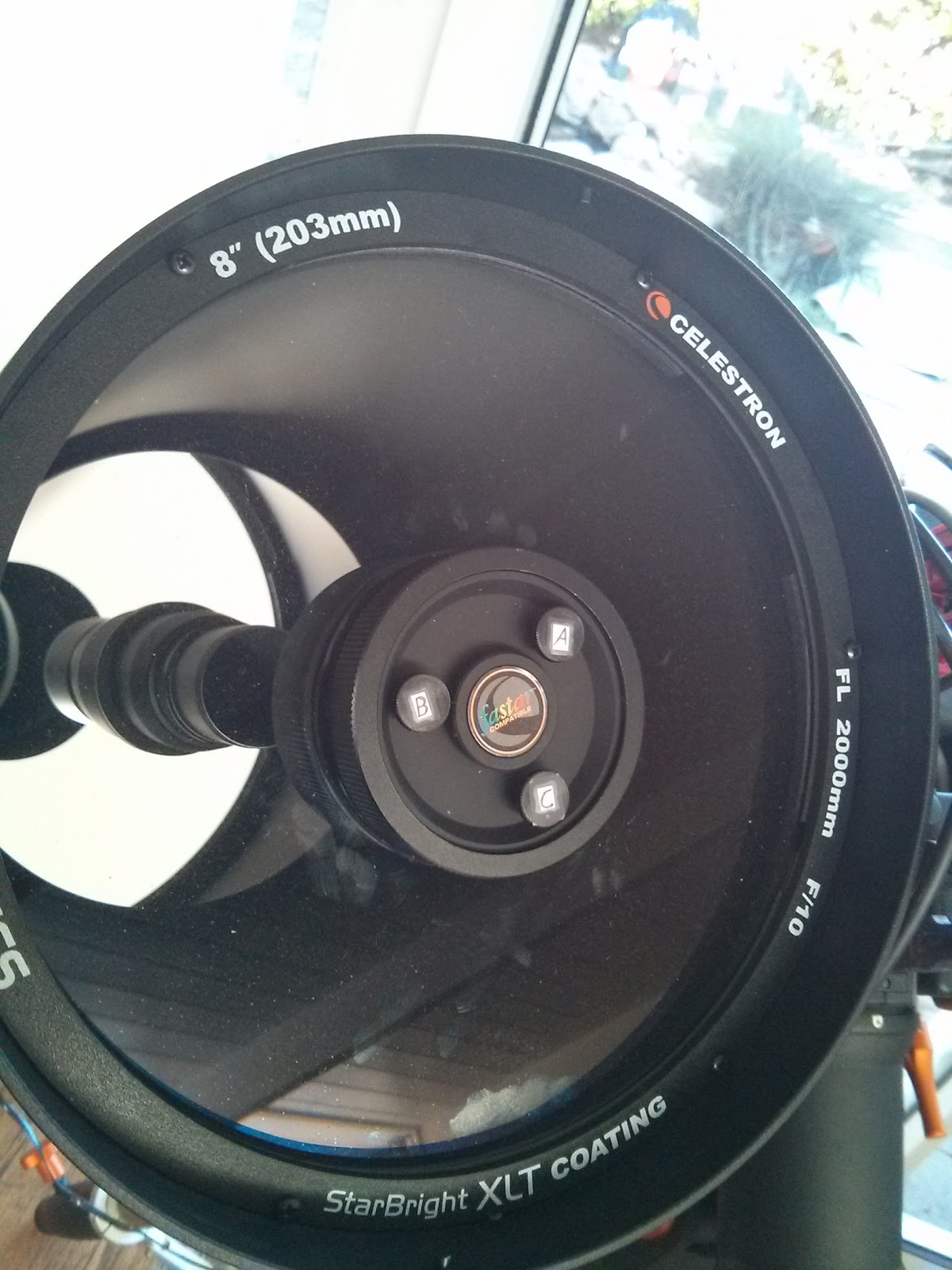On the celestroncgem mailing list, I received the advice to set backlash compensation. Last night I started it, but didn't get far. The RA axis was OK, but I could not work out the DEC axis at all. And at some point, the power to my mount and equipment went off. I decided to go to bed and not to work on this during the night.
Next morning, everything worked again. I measured the current but it was way below 1 Ampere. Not sure what it was. Then I wanted to work on the backlash compensation. First, I worked on the mount itself and tried to remove backlash as much as possible by meshing the spur and worm gear tighter. Next, I spend A LOT of time on balancing the mount. And finally, I worked on the backlash compensation. I reduced the slew rate to 3 and then set the backlash compensation.
... and then clouds moved in, and I couldn't test if guiding is now better :-(
---
Here are the latest results:
| 10 min unguided | 10 min guided |
 |  |
It seems as if guiding works pretty well along one axis. Here is a shot when I moved the DEC axis:
Looks as if guiding is not working on the DEC axis.
... and after close inspection of the PHD settings, I noticed that "Dec guide mode" is Off !!! Aaaahhhh!!!
OK, I enabled and adjusted DEC guiding. Now 10 min exposure looks like this:
Definitively better. But the smaller stars are still elongated. At closer inspection, I see that the PHD graphs looks like this:
For some reasons, the correction in the DEC axis go wilder and wilder.
Reading the backlash compensation instructions again, it says that you should keep DEC backlash compensation in both directions the same - I don't have it the same (slightly higher in positive direction). That could explain why one side constantly corrects more then the other.
After fixing that, this is how the graph looks:
Pretty much the same. But the 10 min exposure:
That looks much better! Looking at the corners:
Clearly some field rotation - which is not surprising, considering that I don't do drift alignment. So, I seem to be able to guide for several minutes. Still, have to figure out why the DEC corrections get larger and larger.
After trying several more times, I found out that I can guide for some time properly, but at some point, the mount gets out of control. Here is an image of a 25 guiding session:
Even better - (almost) all corrections are between -1.5 and 1.5 - and no longer up- or downtrends.
Just to test it, I took an image of M51:
Ignoring the dust donuts, this is actually a pretty good image - and even in the corners is not too much rotation! Furthermore, when I stepped outside to disassemble and move my scope back inside, I realized that it was actually quite foggy. Considering that, this is actually a great result!
... and after close inspection of the PHD settings, I noticed that "Dec guide mode" is Off !!! Aaaahhhh!!!
OK, I enabled and adjusted DEC guiding. Now 10 min exposure looks like this:
Definitively better. But the smaller stars are still elongated. At closer inspection, I see that the PHD graphs looks like this:
For some reasons, the correction in the DEC axis go wilder and wilder.
Reading the backlash compensation instructions again, it says that you should keep DEC backlash compensation in both directions the same - I don't have it the same (slightly higher in positive direction). That could explain why one side constantly corrects more then the other.
After fixing that, this is how the graph looks:
Pretty much the same. But the 10 min exposure:
That looks much better! Looking at the corners:
| Upper left: | |||
| Lower left: |
| Lower right: |
After trying several more times, I found out that I can guide for some time properly, but at some point, the mount gets out of control. Here is an image of a 25 guiding session:
After ~8 mins corrections in both RA and DEC get out of control until PHD completely looses the guide star.
After careful inspection, I found that the Robofocus arm can hit parts of the mount, which would explain this. So, I rotated it upwards.
I also updated my MC firmware to the latest beta. One of the main fixes of this firmware is that it fixes the "DEC cogging" issue - which I have seen before. Furthermore, I received some advice on the CelestronCGEM Yahoo! list about the PHD parameters:
- Lower aggressiveness to 0.6 (using an OAG makes guiding rather sensitive)
- Set max. DEC duration to 1000 or even 1500 - especially for not-perfect polar aligned mounts
- Set exposure to 2-3 seconds to avoid over correction
Much better - but still somewhat erratic. Next, I changed the exposure time to 5 seconds:
Just to test it, I took an image of M51:
Ignoring the dust donuts, this is actually a pretty good image - and even in the corners is not too much rotation! Furthermore, when I stepped outside to disassemble and move my scope back inside, I realized that it was actually quite foggy. Considering that, this is actually a great result!





















